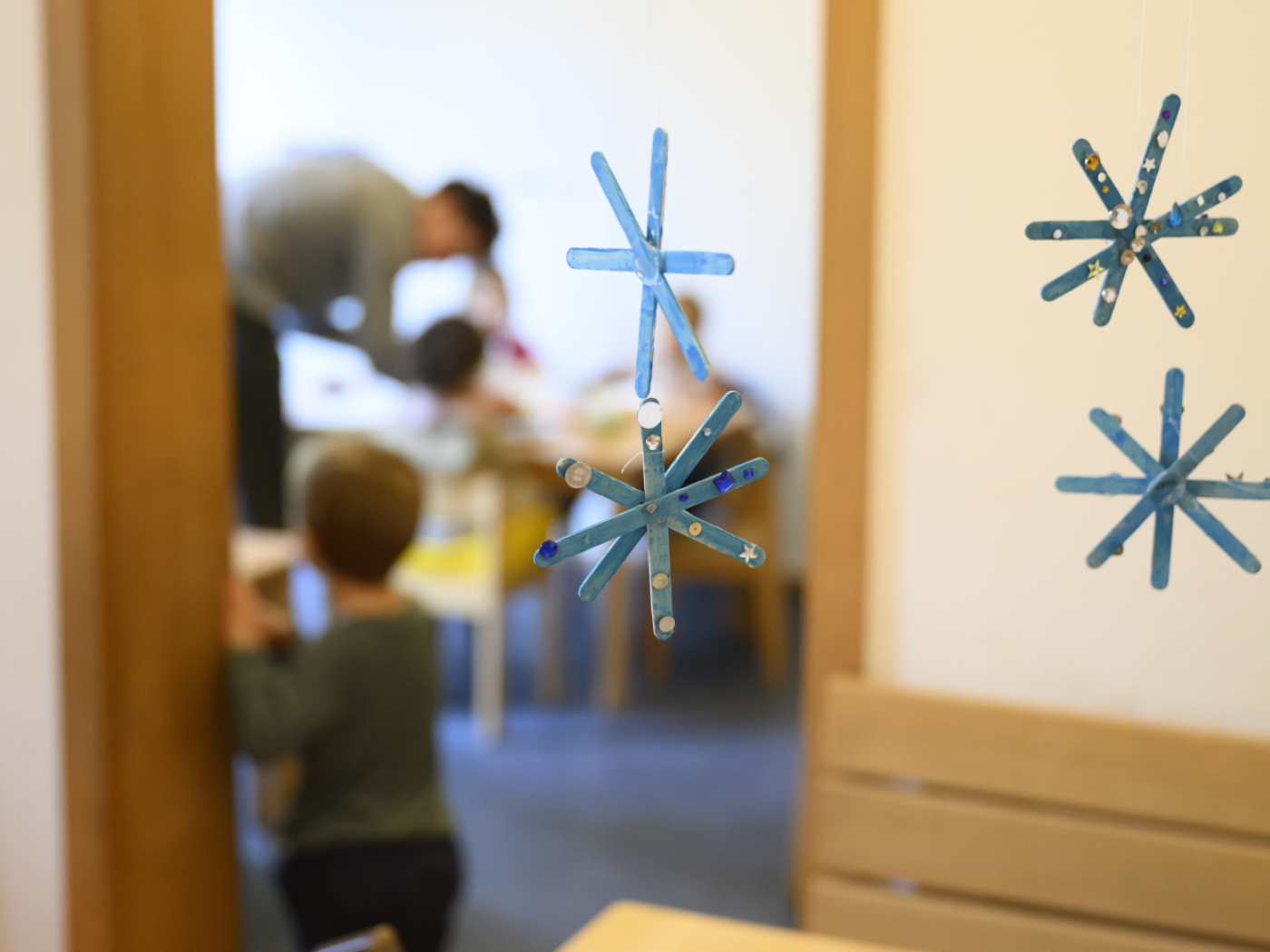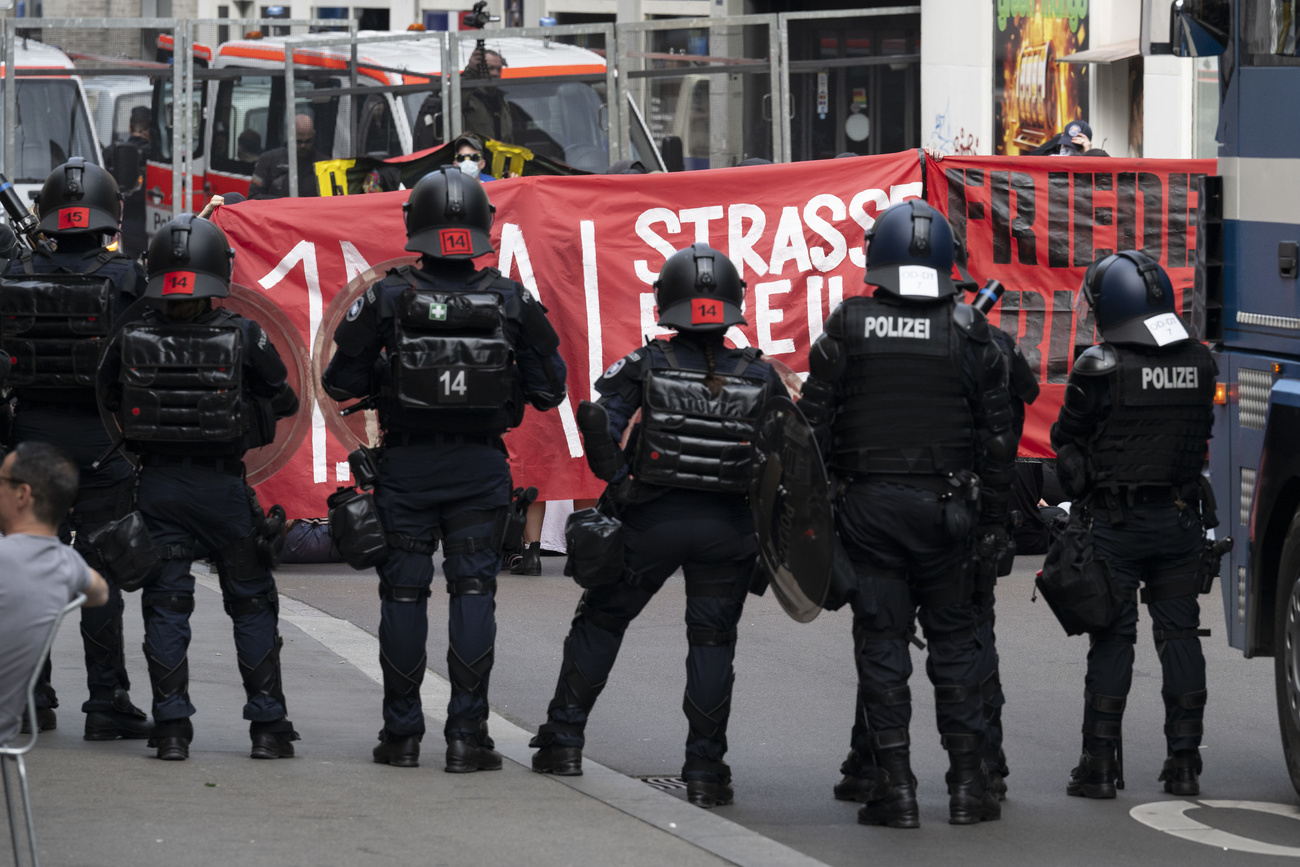Lessons from the Gotthard tragedy

Innovative safety measures have been introduced at the Gotthard tunnel in response to last year's tragic fire.
A staggered entry system for trucks and independently controllable air vents are among the main improvements.
Escape procedures have also been made clearer as part of a safety overhaul costing some SFr36 million ($24.3 million) to date.
“A good solution”
“We wouldn’t like to say that the Gotthard is the safest tunnel in the world, because you can never rule out the risk of an accident,” tunnel safety commissioner Walter Steiner told swissinfo, “but it is our aim to be among the safest, and we think the latest system offers a good solution for the immediate future.”
Last year’s fire, in which 11 people died, was caused by a head-on collision between two trucks, and it is truck drivers whose passage through the Gotthard has subsequently been the most restricted.
When the tunnel reopened last December, trucks were only allowed through in one direction at a time. However the one-way system led to massive queues and provoked strong protests from truck drivers.
Concerns were also raised over safety since the one-way system allowed trucks to enter the tunnel in a bunched up fashion.
Drip-feed
The new “drip-feed” system is designed to ease both problems. Using a separate truck lane and traffic lights, heavy goods vehicles are sent into the tunnel in a staggered manner and at a rate dependent upon the number of other vehicles using the Gotthard.
That should stop trucks getting too close to each other once inside the tunnel, and lower the waiting times in comparison to the old one-way system.
On particularly congested days, however, the Federal Roads Office admits that truck drivers will suffer the most.
Seeing red
Under the new traffic control system, a “phase red” warning will be issued once the number of cars entering the Gotthard and neighbouring San Bernardino tunnel exceeds the rate of 1,000 per hour. At this point, Swiss border officials will stop truck drivers from using the routes leading to the tunnels.
The biggest problems are expected to come when snow blocks the alternative Gotthard pass and in the build up to national holidays. On holidays themselves, trucks will not be allowed to enter the tunnel.
The first “phase red” warning was issued on October 2, just two days after the introduction of the new system, and attributed to the amount of traffic heading towards Germany to celebrate the country’s national unity day.
“Huge traffic problems”
“We’ll continue to have huge traffic problems on the Gotthard route,” admits Roads Office spokesman Daniel Schneider. “But that doesn’t just come down to the method we use to send trucks through the tunnel.
“For one thing, holiday makers can help ease the burden by using other routes. Last year I was heading south myself using the San Bernardino. The radio was announcing huge queues at the Gotthard but the San Bernardino was almost empty. People have to be educated about the other routes available.”
Education is also central to the changes made within the Gotthard tunnel itself. Frequent radio broadcasts tell drivers what they should do in the event of an accident with further instructions clearly set out inside the escape tunnels, should an evacuation be necessary.
New ventilation system
In the event of fire, a new ventilation system is in place allowing tunnel staff to open air vents on an individual basis. This means that smoke and toxic fumes can be extracted directly from the scene of the crash.
During last year’s fire, tunnel staff were forced to open all the vents simultaneously which may actually have helped to spread the lethal gases further through the tunnel. The official report into the tragedy stated that most of the dead were killed by asphyxiation.
“We are always working to reduce risk,” Steiner told swissinfo. “In fact, we decided to improve our ventilation system after the Mont Blanc tunnel fire, which was before the tragedy in the Gotthard.
“The events here were also a reminder that in the first ten minutes or so people have to think about self-protection because there will be no fire fighters or ambulance at the scene at that point. That’s why we have also concentrated on improving the information available to the road users.”
No barrier
The need to get rescue workers quickly to the scene of an accident explains what at first sight seems to be the most glaring safety omission in the Gotthard tunnel – the lack of a barrier between the two oncoming lanes of traffic.
Although various systems have been studied, safety officers believe that the potential benefits of a barrier would be outweighed by the resulting access problems for emergency vehicles.
A second Gotthard tunnel, allowing for the separation of northbound and southbound traffic, would clearly be the safest option but proposals to build such a tunnel have been met with strong opposition.
“The valley that runs through cantons Uri and Ticino is very small, and a second tunnel would bring even more traffic through,” explains Schneider. “The environmental effects and the likely increase in noise pollution have been put forward as arguments against further construction.”
No urgent need
The Swiss government echoed that sentiment in May, when transport minister Moritz Leuenberger insisted there was no urgent need for another tunnel, since the biggest traffic jams at the Gotthard were limited mainly to the holiday season.
In any case, the construction of a second tunnel would need more than just ministerial backing, since the Swiss constitution currently contains a clause that prohibits the construction of new transit roads in the Alps.
And as long as the new tunnel remains a pipe dream, transport officials will have to keep pondering the best possible way to combine speed with safety.
swissinfo, Mark Ledsom
Around SFr36 million has been spent so far on repairing the tunnel and improving safety.
A limited number of trucks is being allowed into the tunnel at staggered intervals.
Ventilation systems and emergency procedures have also been improved.

In compliance with the JTI standards
More: SWI swissinfo.ch certified by the Journalism Trust Initiative










You can find an overview of ongoing debates with our journalists here . Please join us!
If you want to start a conversation about a topic raised in this article or want to report factual errors, email us at english@swissinfo.ch.